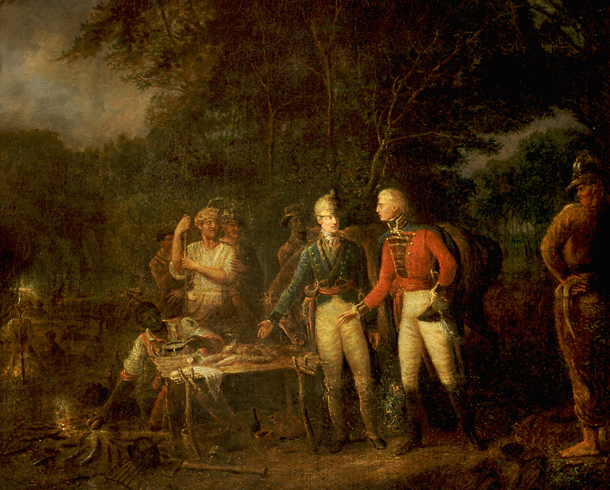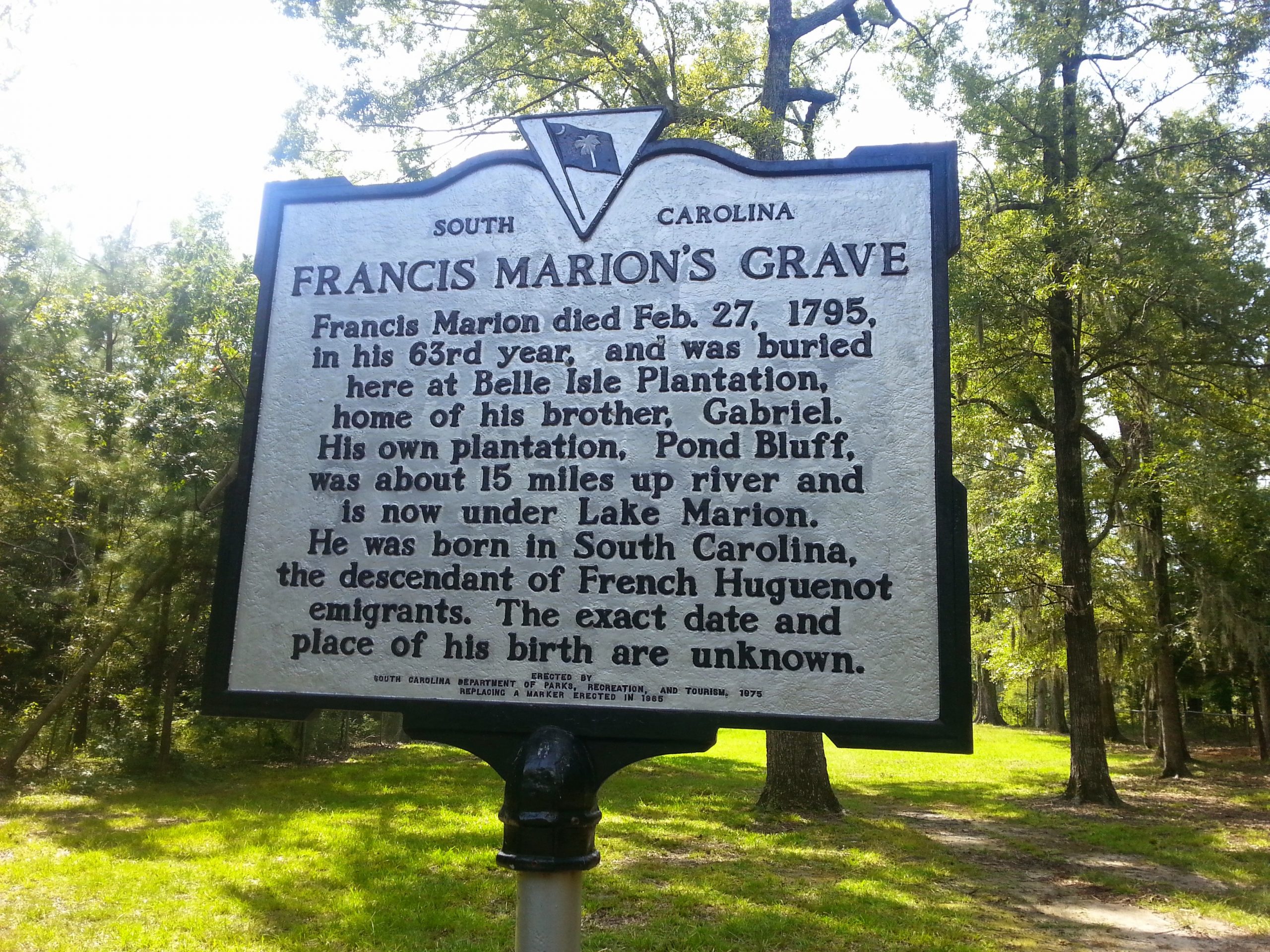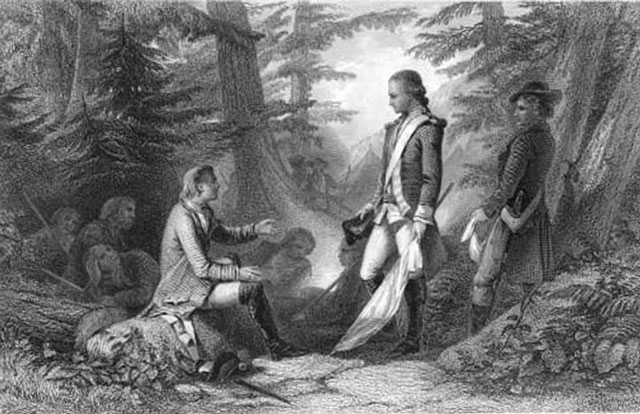He returned home to farm but picked up the arms to fight against the British in the American Revolutionary War from 1775–1782 as an officer in the Continental Army and the South Carolina Militia.
Under his command, his Continental “irregulars” adopted guerilla attacks, based on their intimate knowledge of South Carolina’s Lowlands, leading to Marion’s nickname of “Swamp Fox,” given to him by British Colonel Banastre Tarleton. He is considered a father of modern guerrilla and maneuver warfare.
Marion was elected to the South Carolina State Assembly in January 1782 in Jacksonborough but in June he returned to his troops to stop a Tory Loyalist uprising on the Pee Dee River. His plantation was burned but he returned to restore it after Great Britain withdrew after the Revolution. He was named Commander of Fort Johnson on nearby James Island. This office paid $500 annual salary—enough to allow him to rebuild his Pond Bluff Plantation.
On April 20, 1786, at 54 years old, Francis Marion married his cousin, 46-year-old Mary Esther Videau. They had no children together.
Marion was again elected to the South Carolina State Senate in 1786 and served as a delegate to the South Carolina Constitution Convention at which he voted (for South Carolina?) to join the Union of the United States of America.
Brigadier General Francis Marion passed away at Pond Bluff on February 27, 1795, the day after his 63rd birthday. He was buried at the Belle Isle Plantation Cemetery Saint Stephen’s Parish, Berkeley County, South Carolina. Each year on the anniversary of his death, the DAR and the SAR meet at his gravesite to celebrate and remember this great Revolutionary War Patriot.





